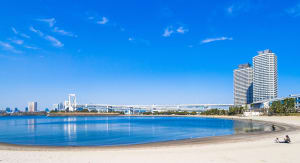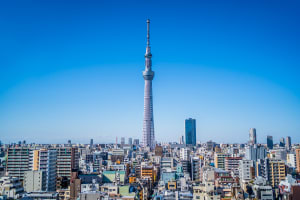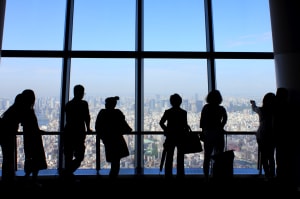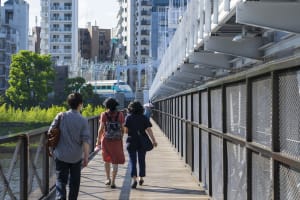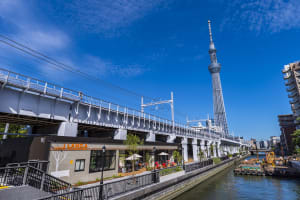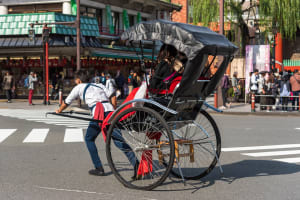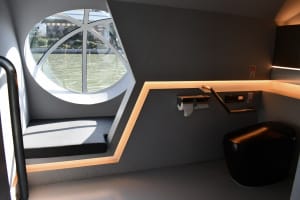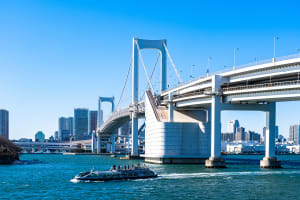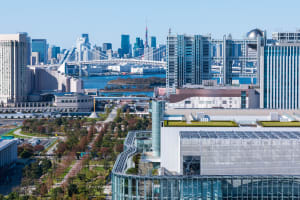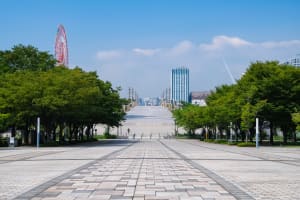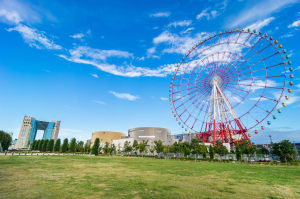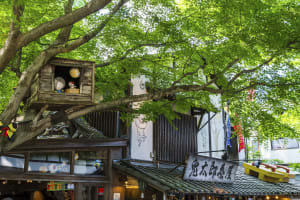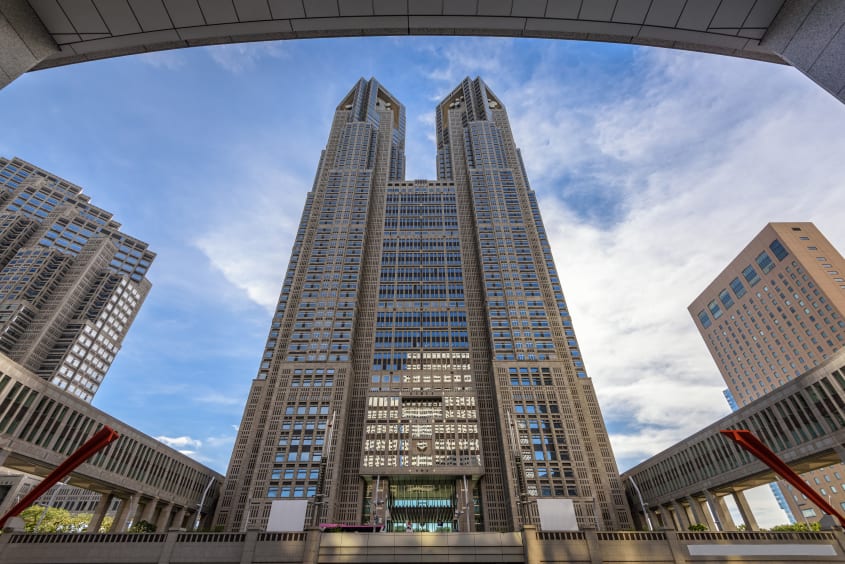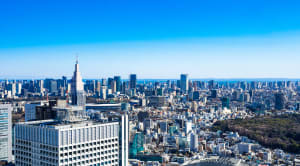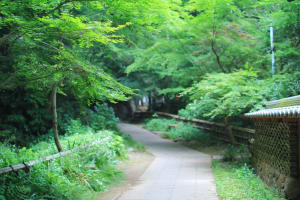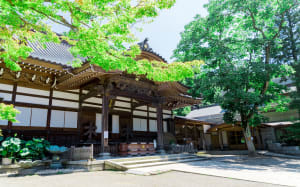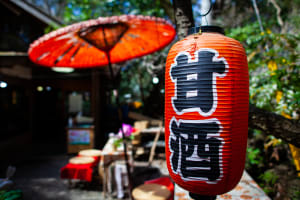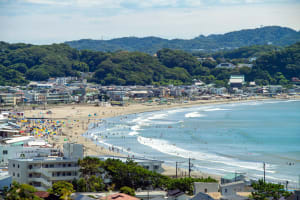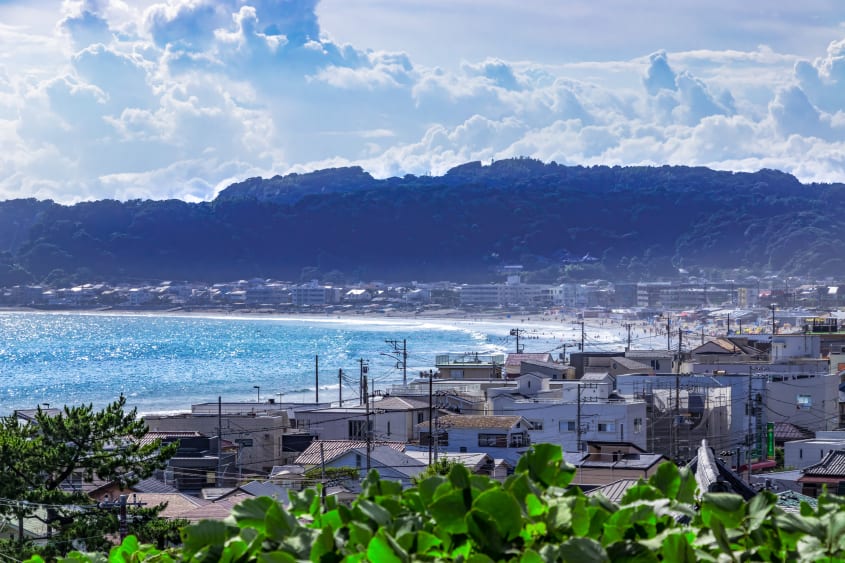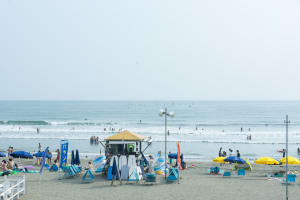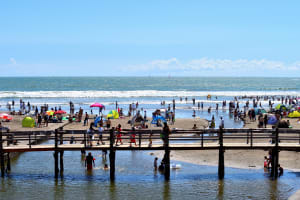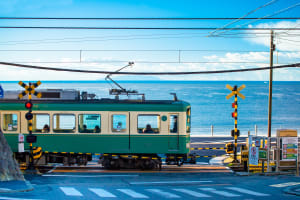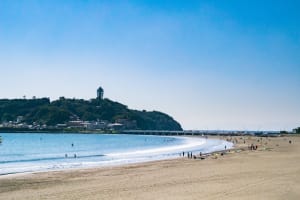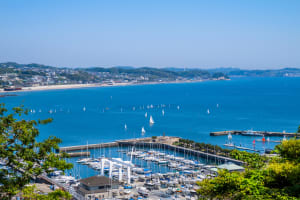
Explore wheelchair-accessible spots around Tokyo in 3 days! Barrier-free 72-hour Tokyo Itinerary A 72-hour itinerary packed with games and sightseeing: Check out Tokyo’s urban attractions and serene outskirts using barrier-free transport and UD taxis.
Enjoy Tokyo and its outskirts with this three day itinerary:
Day 1: Catch a game in the Tokyo Bay Zone after visiting Tokyo Skytree, the historic Asakusa area, and theme parks in Odaiba. You’ll even get a chance to ride a water bus!
Day 2: Start your day with fantastic views from the Metropolitan Government Building in Shinjuku, followed by an excursion to the tranquil Jindaiji Temple in Tokyo’s outskirts.
Day 3: Pay a visit to the old capital, Kamakura, just an hour away by train from Tokyo. Head to Yuigahama beach, a barrier-free area where you can take a dip in a beach wheelchair.
The locations in this itinerary are all near Tokyo 2020 game venues, so you can enjoy sightseeing between games.
Fast Facts
Required time: 72 hours
Distance traveled: App. 150 km
Transportation: Train, bus, water bus, walk, UD taxi
Starting point: Tokyo
Final destination: Tokyo
Accommodation: Tokyo area
Tokyo Skytree
| 10 min Walk
Tokyo Mizumachi
| 20 min Walk
Asakusa
| 70 min Water bus
Odaiba
| Walk
Olympic/Paralympic venue
Accommodation: Tokyo area
Pick up a combined ticket that gives you access to the 350-meter high observation deck and the 450-meter high glass corridor. Same day weekday tickets are 2,100 yen, while advanced tickets are a little cheaper at 1800 yen.
While you’re in the area, you can also pay a visit to the Solamachi complex below, which houses stores, restaurants, the Sumida Aquarium, and a planetarium.
From there you can head to the Sumida River Walk, a pedestrian bridge with barrier-free facilities that spans over the Sumida River. Wheelchair users can cross the bridge to access the Asakusa area on the opposite side.
Ahead of the Tokyo 2020 Olympic and Paralympic Games, taxis in Tokyo have been given a universal design (UD) revamp. They have higher ceilings and more room compared to conventional sedans.
They are equipped with ramps and handrails, and the doors slide open, making them wheelchair-accessible. Fares are the same as ordinary taxis.
*UD taxis can accommodate two passengers (excluding the driver).
*Set aside an additional 10-15 minutes for installing the ramp, affixing the wheelchair, fastening the seat belt and other preparations.
*UD taxis may not be able to accommodate some wheelchairs, depending on their share and rotational mobility.
Jidaiya has special ramps to make your rickshaw ride more accessible.
Fasten your seatbelt and enjoy the sights of Asakusa from a unique vantage point.
MEGA WEB is an interactive theme park located in Palette Town. You can get hands-on with Toyota cars—their displays include historic vehicles and racecars. There’s even a mini racecourse designed for children. Among the displays are cars adopting universal design, which you can take test rides on. Admission is free.
Afterwards, you can return to your hotel via the Yurikamome or Rinkai Line, or the water bus. Shibuya, Shinjuku, and Ikebukuro can all be accessed on the Rinkai Line without having to transfer.
Accommodation: Tokyo area
Metropolitan Govt. Building
| 15 min Walk
Shinjuku Station
| 15 min Train
Chofu Station
| 15 min Bus
Jindaiji Station
| 30 min Bus+ Train
Tokyo Stadium
Accommodation: Tokyo area
On cool, clear days, Mount Fuji is also visible in the west. You’ll be lucky to spot it in summer. Beyond the residential area that sits on the west side is your next destination—Jindaiji Temple.
Access Shinjuku Station via the wide, well-maintained pathways that connect to the Metropolitan Government Building. Hop on the Keio Line and make your way to Chofu Station.
Activities to try nearby include pottery workshops and natural hot springs.
Jindaiji walking course:
https://www.sangyo-rodo.metro.tokyo.lg.jp/tourism/accessible/en/course09.php
Tokyo Stadium will be hosting Olympic soccer, rugby, and modern pentathlon games. To access it from Jindaiji Temple, take the train from Chofu Station to Tobitakyu Station. Alternatively, you can take a taxi—it’s about a 15-minute ride and will cost around 2,000 yen.
Accommodation: Tokyo area
Tokyo Station
|60 min Train
Kamakura
| Train/bus/taxi
Great Buddha of Kamakura
| 20 min Walk
5 min Taxi
Yuigahama Beach
| 30 min Train
Katase-Enoshima
| 30 min Train
Enoshima Yacht Harbor
|
Katase-Enoshima
Accommodation: Tokyo area
Kamakura houses many ancient temples and is known for its enormous Buddha statue.
Most public transportation systems around Tokyo are barrier-free, so you can make a smooth and hassle-free journey.
To access the statue from Kamakura Station, take the retro-looking Enoshima Electric Railway or the local bus. The streets of Kamakura still retain an old-fashioned charm, but note that pathways are not very wide. The Buddha statue is about 2 kilometers from the station, so taking a taxi is also a viable option.
The beach is about a kilometer from the Buddha statue. Although it’s 20 minutes away on foot, the sidewalks leading to it are not very spacious. Taking a taxi would be a more convenient option.
The beachside rest area is connected to the waterfront with wooden boardwalks, which means that wheelchair users can move around without getting caught in the sand.
You can even rent beach wheelchairs that come with floaters and take a dip in the water.
Take the Enoshima Electric Railway and enjoy the beautiful seaside views before you alight at Katase-Enoshima Station.
A long bridge that extends to the sandy beach on the opposite bank will take you to Enoshima. The walk is about 20 minutes.




















































